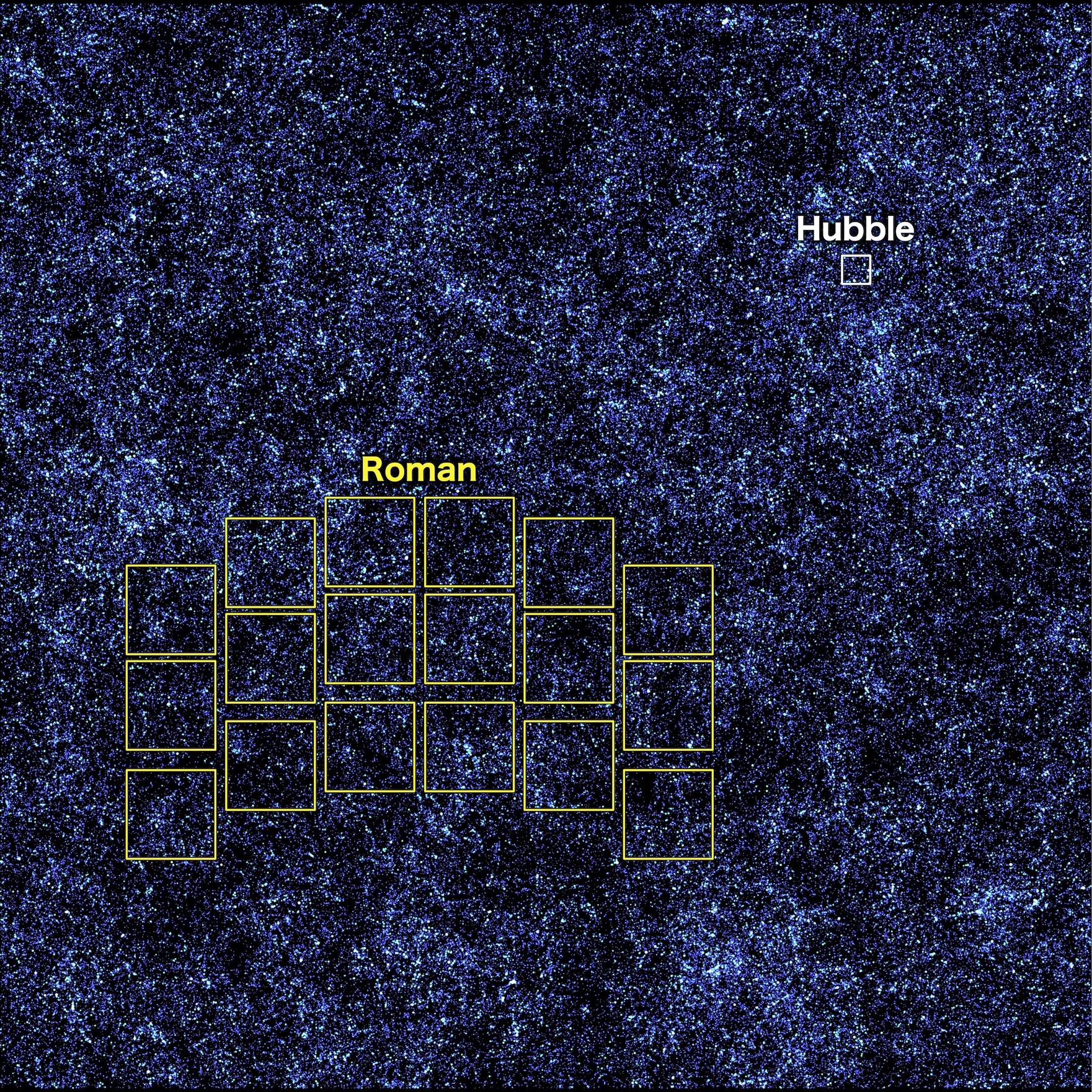New Baylor Physics Professor Part of $11 Million NASA Agreement Funding Infrastructure Research for Nancy Grace Roman Space Telescope
Joining Baylor from Duke University, Benjamin Rose, Ph.D., will serve as co-principal investigator on a project infrastructure team preparing space telescope for use by 2027

Ben Rose, Ph.D., assistant professor of physics at Baylor University (Matthew Minard/Baylor University)
Contact: Lori Fogleman, Baylor University Media & Public Relations, 254-709-5959
Follow us on Twitter: @BaylorUMedia
AUDIO: Listen to Baylor physicist Ben Rose, Ph.D., discuss the story of the Roman Telescope and why NASA is investing $11 million in his research team’s work on this week's Baylor Connections podcast.
WACO, Texas (Aug. 3, 2023) – Benjamin Rose, Ph.D., who joined Baylor University Aug. 1 as an assistant professor of physics, will serve as one of four project leaders for a research team which recently earned $11 million in NASA funding to investigate infrastructure solutions for the Nancy Grace Roman Telescope. The Nancy Grace Roman Telescope, due to launch by 2027, is NASA’s next large flagship mission. The telescope will provide significant advances in panorama and processing to examine vast expanses of the universe.
“The Nancy Grace Roman Space Telescope will dramatically enhance scientists’ ability to answer significant cosmic questions,” Rose said. “I’m grateful for the opportunity to continue to work on the project and to partner with an excellent team of scientists as we prepare the telescope for use.”
Through the NASA funding, Rose and his fellow researchers will pursue infrastructure development capable of handling and processing the vast amounts of data collected by the telescope. The Roman Telescope will provide a field of view 100 times larger than the Hubble Space Telescope, and continuous operation capabilities will enable it to capture data approximately 1,000 times faster than Hubble. Those tools will place unique demands on the system to ensure the data is portable and accessible to scientists.
Rose will build on previous experience working with the Roman telescope. He comes to Baylor from Duke University, where he spent three years as a research scientist. Prior to his time at Duke, he served as a postdoctoral researcher at the Space Telescope Science Institute in Baltimore, Maryland, which partners with NASA on space telescope missions.
“I am thrilled to welcome Ben Rose to Baylor. This particular funding is of very high interest due to the long-term nature of the work and the strong partners we are engaging with to do the work,” Provost Nancy Brickhouse, Ph.D., said. “We will undoubtedly learn a great deal about God's creation in the exploration of the universe with this powerful technology.”
For scientists like Rose, the data collected will enable the pursuit of a number of cosmic questions. A distinct strength of Roman telescope will be data collection on exoplanets—planets beyond our solar system—as well as dark matter and dark energy.
“It is an incredible opportunity for Dr. Rose, the Department of Physics and Baylor University to be part of a large national research cluster of scientists funded by NASA to study the depths of our universe with the next generation telescope,” said Lee Nordt, Ph.D., dean of Baylor’s College of Arts and Sciences.
Preparing a “next generation” telescope
Images and data collected by the Hubble Space Telescope and the James Webb Space Telescope have expanded understanding of Space, enhanced research opportunities and generated national news since Hubble’s launch in 1990. The Nancy Grace Roman Space Telescope will dramatically expand NASA’s data-gathering capabilities, utilizing decades of technological advances to grow the scope and speed of data collection.
“The Roman telescope has the same depth and spatial resolution as Hubble, but can survey the sky at 1,000 times the rate of speed. So, something that would take 1,000 months in the past would now require just one month of Roman operation,” Rose said. “Its field of view is over 100 times that of Hubble and, unlike past projects, can operate continuously for constant observance.”
Comparison of the Roman telescope’s field of vision next to the Hubble telescope’s capabilities. Image courtesy of NASA's Goddard Space Flight Center/A. Yung
Capabilities of this magnitude require years of infrastructure work, which the NASA grant enables through the creation of the Project Infrastructure Team (PIT). Rose serves as one of four co-principal investigators, along with Dan Scolnic, Ph.D., of Duke University; Rebekah Hounsell, Ph.D., of the University of Maryland-Baltimore County and NASA’s Goddard Space Flight Center; and David Rubin, Ph.D., of the University of Hawaii. They are joined on the team by more than 50 scientists from over a dozen universities.
The PIT will address a variety of key infrastructure needs in areas like pixel processing, data measurement and management and a structural redesign of the processes necessary for effective data management and distribution.
“We have to redesign everything to be portable and modular,” Rose said. “This leap in precision will create challenges—a handful of things we know will be difficult, and challenges that we haven’t run into before. This survey will be 10 times larger than every other survey before now combined. So, we have to build a flexible pipeline to quickly patch and address roadblocks to analyzing this data.”
Research and teaching at Baylor
As Rose pursues the goals of the Project Infrastructure Team for the Nancy Grace Roman Space Telescope, he’ll concurrently begin his independent research and teaching career at Baylor. Rose’s expertise will complement that of colleagues in physics and other departments in growing Baylor’s space research portfolio, which includes the Center for Astrophysics, Space Physics & Engineering Research (CASPER).
“I’m very excited to be a part of the astrophysics concentration in the Baylor faculty,” Rose said. “There’s an amazing group of researchers in both laboratory work and theory. It’s fantastic to come and fit in as a puzzle piece alongside colleagues within the rest of the Department of Physics.”
Baylor’s distinct role as a preeminent Christian research university played a further role in his recruitment.
“I love that Baylor is a place that still has a teaching focus alongside high-level research. I love teaching research and helping students understand how to utilize research to propel humanity’s knowledge forward,” Rose said. “I also appreciate that Baylor is a Christian university pursuing influence in the research space. It is carving out a unique niche in academia, and I’m excited to be a part of moving that forward.”
Rose officially joined the Baylor faculty Aug. 1, 2023. The five-year NASA agreement officially begins in October.
ABOUT BAYLOR UNIVERSITY
Baylor University is a private Christian University and a nationally ranked Research 1 institution. The University provides a vibrant campus community for more than 20,000 students by blending interdisciplinary research with an international reputation for educational excellence and a faculty commitment to teaching and scholarship. Chartered in 1845 by the Republic of Texas through the efforts of Baptist pioneers, Baylor is the oldest continually operating University in Texas. Located in Waco, Baylor welcomes students from all 50 states and more than 100 countries to study a broad range of degrees among its 12 nationally recognized academic divisions.
ABOUT THE COLLEGE OF ARTS & SCIENCES AT BAYLOR UNIVERSITY
The College of Arts & Sciences is Baylor University’s largest academic division, consisting of 25 academic departments in the sciences, humanities, fine arts and social sciences, as well as 11 academic centers and institutes. The more than 5,000 courses taught in the College span topics from art and theatre to religion, philosophy, sociology and the natural sciences. The College’s undergraduate Unified Core Curriculum, which routinely receives top grades in national assessments, emphasizes a liberal education characterized by critical thinking, communication, civic engagement and Christian commitment. Arts & Sciences faculty conduct research around the world, and research on the undergraduate and graduate level is prevalent throughout all disciplines. Visit the College of Arts & Sciences website.
